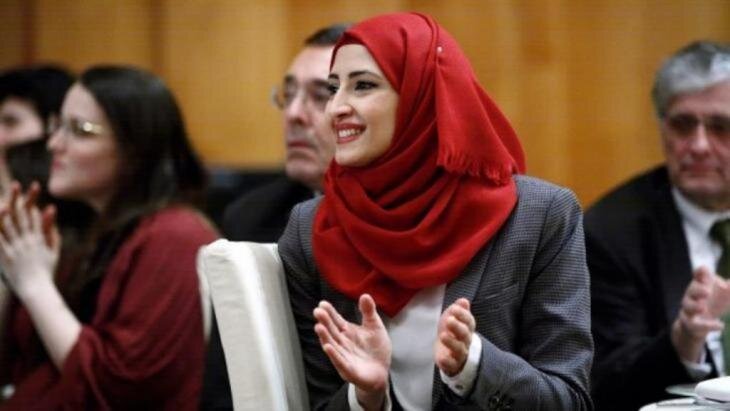The image of Muslim women “We refuse to be hijab-wearing princesses”
Among Muslims, the image of women as "cossetted hijab-wearing princesses" is frequently invoked. But Muslim women have long wanted to be more. In her essay, Karoline Roscher-Lagzouli explores how they can find a new approach to their Muslim femininity, beyond patriarchal ideals and the hackneyed Western debate on headscarves
The first Muslim women in Islamic history weren’t well-protected hijab princesses; they were strong women who are still shining beacons today: warriors, clever businesswomen, scholars and teachers of men.
Khadija was the first to believe in the still-uncertain, fledging Prophet. She reassured him when he lay hidden under his blanket in her house, and encouraged him to follow his destiny.
Aisha, the Prophet’s young wife, passed on more than 1200 hadiths, taught Islam to the men and did not shy away from correcting their interpretations when she thought it necessary.
Hafsa preserved the Koran as a written text and, so we are told, thereby ended the dispute among the Prophet’s companions after his death about the correct form in which the Koran should be recited.
They were all strong women, who not only stood up autonomously for their rights, but made substantial contributions to the transmission of Islam and Islamic theology. They were operating in a patriarchal society, in the context of which Muhammad’s teachings – especially with regard to the position of women – must have seemed downright revolutionary.
The women of early Islamic history prayed quite self-evidently alongside the men, in one room of the mosque. These houses of prayer had no dividing walls or separate entrances for the different sexes. In the opinion of a few classical Islamic scholars, such as Ibn Hanbal (780 - 855) or even Ibn Taymiya (1263 -1328), who paved the way for the withdrawn and spiritual Salafists, a woman could act as a female imam under certain circumstances and lead men in prayer. Today, the majority of Muslims react to this view with rejection and incomprehension, to put it mildly.
The revolutionary spirit seems to have been lost
Today, the actions and practices of the Prophet and his companions both male and female – the Sunnah – are held up as an example for us to follow by venerable Islamic scholars. But Muhammad’s revolutionary spirit seems to have been lost, buried beneath the dust of the centuries.
Obsessed with a piece of fabric: "What would become of the critics of Islam and enlightened thinkers, the oh-so-noble liberators of women, without the headscarf?" asks Karoline Roscher-Lagzouli in her essay. "What would they find to write about if the last unregenerate woman were to finally take off her scarf?" For the self-appointed liberators of Muslim women, free Muslim women are only those who have discarded their headscarves. It is inconceivable that some might want to make their own, self-determined decisions
Obsessed with a piece of fabric: "What would become of the critics of Islam and enlightened thinkers, the oh-so-noble liberators of women, without the headscarf?" asks Karoline Roscher-Lagzouli in her essay. "What would they find to write about if the last unregenerate woman were to finally take off her scarf?" For the self-appointed liberators of Muslim women, free Muslim women are only those who have discarded their headscarves. It is inconceivable that some might want to make their own, self-determined decisions
What can be read in the Koran as the start of a process leading to fairness and equal rights is too often not followed to its conclusion, but submerged under an avalanche of men’s fears. These nudges towards equality are lost in the anxiety about somehow being associated with feminism. The term feminism is sometimes used to silence awkward Muslim women who advocate for a self-determined image of Muslim women. Yet even Muhammad may well have been considered a feminist in the social context of his day.
The image of the "ideal Muslim woman"
Today, Muslim men writing supposedly Islamic advice books, and in particular on social media, invoke an image of the "ideal Muslim womani" that is reminiscent of the virtuous American housewife of the 1950s. But in doing so, they don’t see the image of toxic masculinity in which they themselves are becoming entangled.

